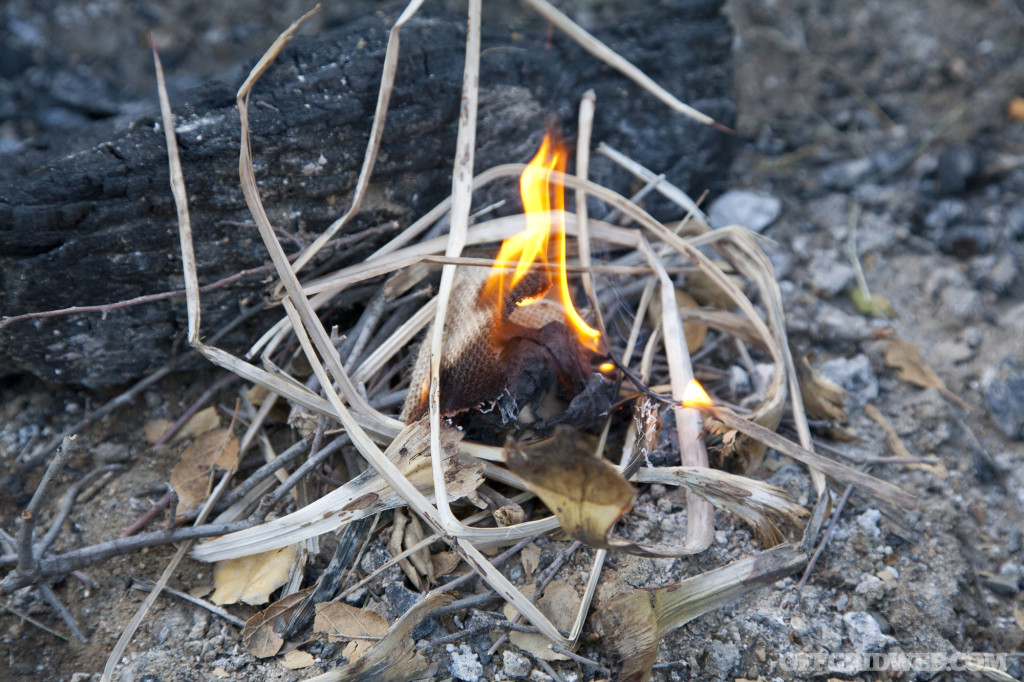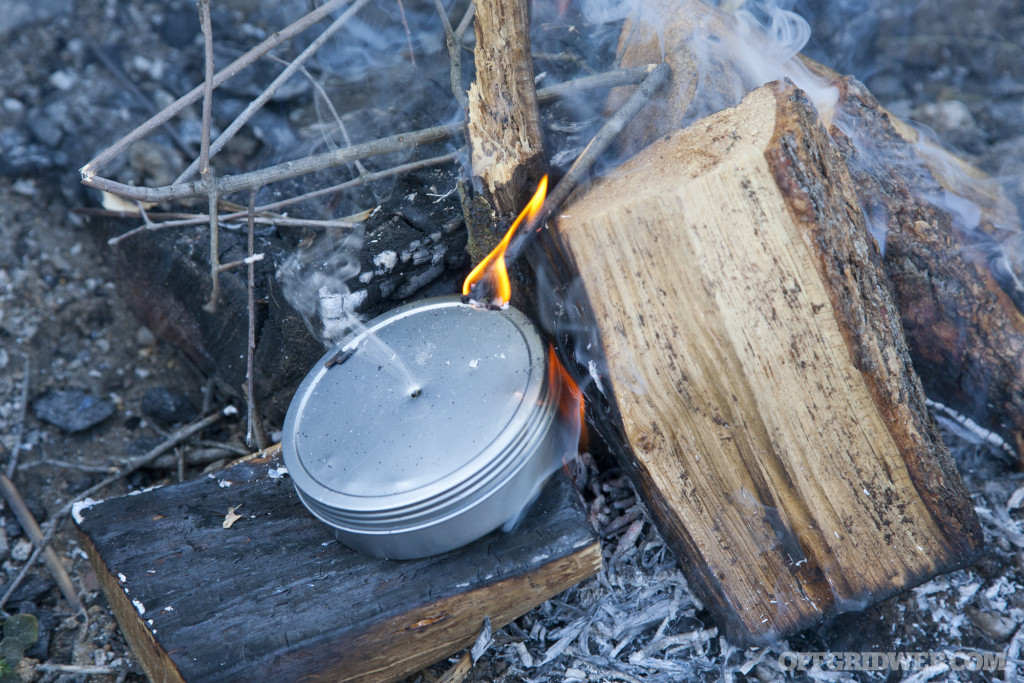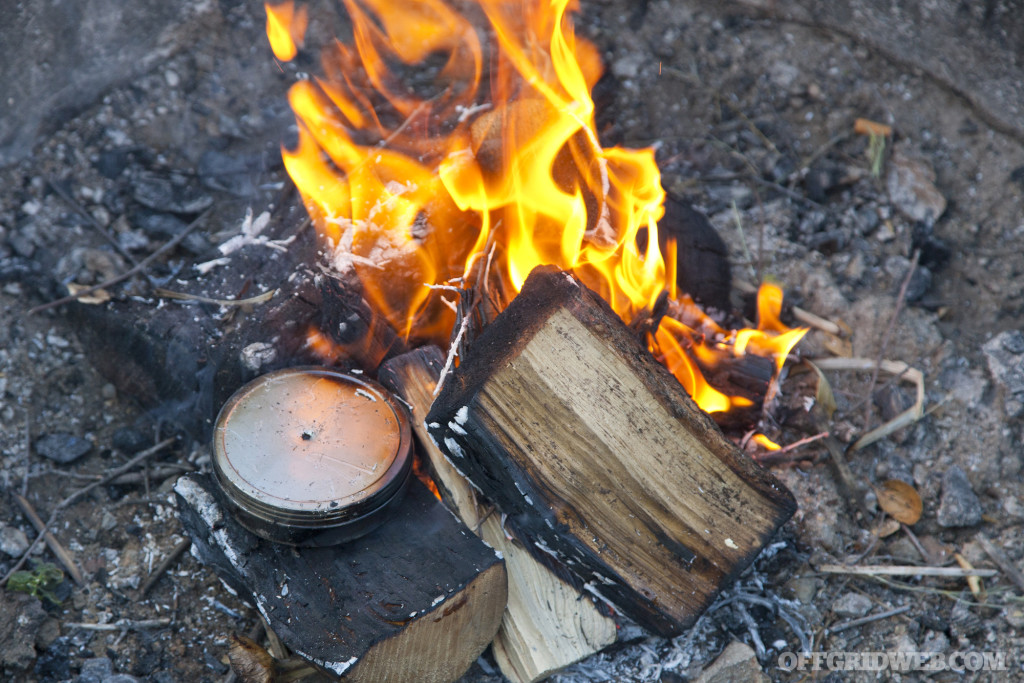Offgrid Preparation DIY Guide: How to Make Char Cloth Fire Starters
In This Article
When you're trying to survive in a hostile environment, fire is essential. The crackling flames serve as the center of your campsite, enabling you to stay warm, cook food, boil water, and deter predators. After all, our ability to willfully turn spark into fire is what separates us from mere animals. It's undeniable that human civilization wouldn't have progressed without it, as making fire on command is a prerequisite for baking pottery, forging weapons, and even the internal combustion engine.
Every survivalist must know how to light a fire, and must be able to obtain the necessary materials to do so. However, you'd be foolish to fully rely on finding all these items in the wild. While it's often possible to build a primitive bow drill and collect tinder from your surroundings, you shouldn't stake your survival on the ability to do so.
Since we emphasize a mindset of preparedness, we advise every survivalist to build and carry some form of fire-starting kit. Depending on your location and specific needs, this can range from a tiny mint tin to a larger waterproof container full of supplies. At the bare minimum, this kit should contain two key items:

These two items provide the means of creating a spark, and nursing that spark into a small flame. Once you have a flame, you can add kindling materials. Kindling—such as twigs, leaves, or dry grass—is often easier to find in the wild. Also, while tinder must remain bone-dry to take the initial spark, a little moisture in your scavenged kindling isn't as much of a deal-breaker.
Ignition sources are relatively straightforward, since you can purchase lighters and matches virtually anywhere. However, finding a good tinder material is more difficult. If it doesn't take a spark immediately, or extinguishes too quickly, you'll be left frustrated and desperate.
One of our favorite tinder materials is known as char cloth. This substance is composed of natural plant fibers, transformed via extreme heat into a blackened slow-burning fuel. Char cloth will ignite almost instantly on contact with sparks, and it smolders for an extended period, providing an easy way to light a fire.
Fortunately, char cloth is easy to make, and is a great way to recycle old T-shirts and other fabric scraps into a survival resource.
Here's a basic checklist of materials to get you started:
To create your own char cloth tinder, you'll need to start with some natural plant-based fabric. We chose an old worn-out 100% cotton T-shirt, an item that most people already have in their homes. However, if you prefer, you can use linen or jute instead. Just make sure there's no synthetic fiber, such as polyester or nylon, as this will reduce the effectiveness of your char cloth.
With a pair of scissors, cut the fabric into manageable pieces. We opted for squares that measured about 1 inch by 1 inch. Once you have a few handfuls of this fabric, you'll need to place them loosely in a metal tin. Ensure that the squares aren't too tightly packed, as this can shield some of them from the heat we'll be applying.
Next, punch a small hole in the lid of your tin. This hole will allow pressure and smoke to escape, without allowing enough oxygen into the container to ignite your cloth squares. Aside from this single hole, ensure the tin is sealed tightly.
Now we're ready for the fun part: turning this ordinary cotton into char cloth.
To heat your tin sufficiently, you'll need an open flame. A campfire will work well for this purpose, or you can use an outdoor barbecue. Obviously, don't try this indoors, as it will give off quite a bit of smoke.

Since we didn't have char cloth ready yet, we used some jute scraps and dry Yucca leaves as tinder for our campfire. Then we added twigs for kindling, and finally some fuel logs. Once the fire was crackling away, we could add our tin.

Placing the tin onto the fire, we watched as the flames licked at its base. As the heat grew, a wispy plume of smoke began to escape from the hole we punched. This is what you want to see. It indicates that the cloth inside is undergoing pyrolysis—a process of decomposition under intense heat in the absence of oxygen. Pyrolysis changes the chemical composition of the fabric, leaving a residue that's blackened and extremely carbon-dense. Think of it as charcoal in fabric form.

We left the tin on the fire for about 10 minutes, periodically rotating and agitating it to distribute the heat and shuffle the fabric squares inside. At this point, the plume of smoke will disappear, since there's no untouched cotton material left inside to break down. Once the smoke disappears, your char cloth is ready.
Carefully remove your tin from the fire with a pair of tongs, and set it aside to cool. Once it's cool enough to handle, you can open the tin to see your finished char cloth.
All of the fabric inside should be thoroughly sooty and blackened, yet still flexible. In our case, a few of our squares were too tightly packed in the tin, resulting in a handful of lightly charred (but not fully blackened) squares. These will still burn easily, but won't be as effective as pure char cloth, so try to ensure your fabric has enough breathing room in the tin.
Using a ferro rod to throw sparks onto a piece of our char cloth, we watched as it instantly began to smolder into a red-hot patch of embers. If you add some dry grass or leaves to these embers, and blow lightly into the bundle, you'll have a fire going in no time.
Char cloth is lightweight, easy to transport, and flexible enough to roll or fold tightly within your tinder kit. Better yet, it's easy to ignite with a single stroke of a ferro rod or flint and steel. This is one tinder material no survival fire kit should be without.
For more tips on a variety of fire-starting methods, check out this article from Geek Prepper.
 STAY SAFE: Download a Free copy of the OFFGRID Outbreak Issue
STAY SAFE: Download a Free copy of the OFFGRID Outbreak Issue
No Comments